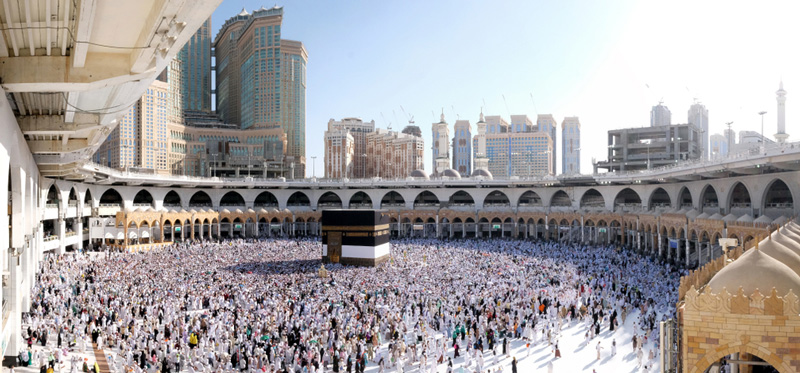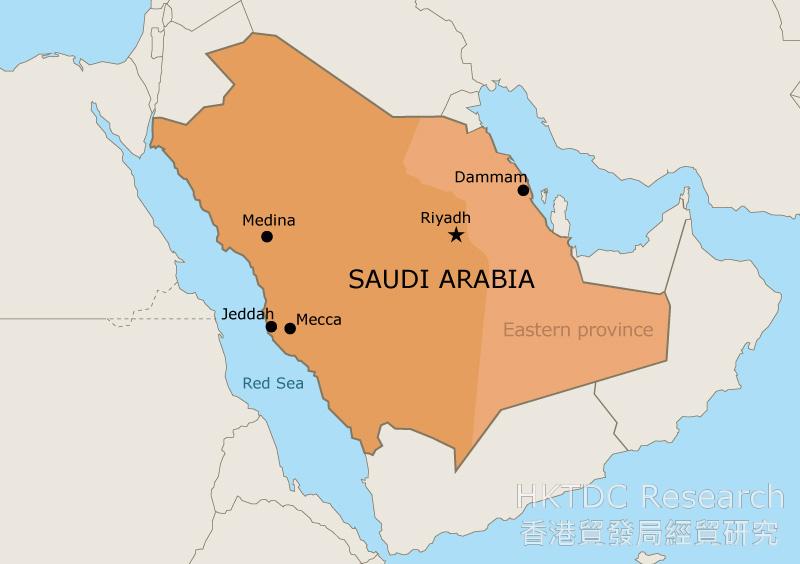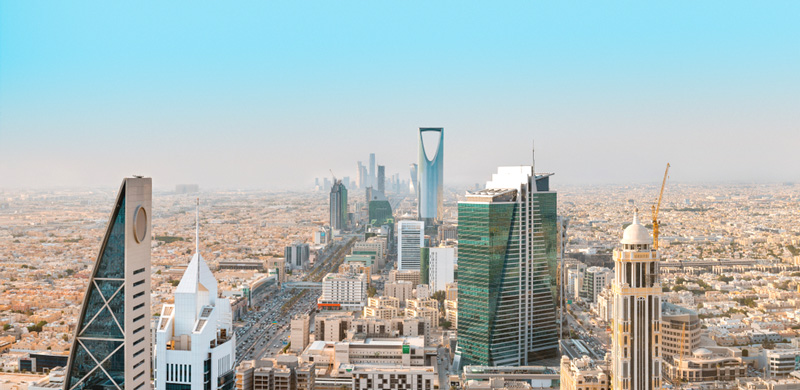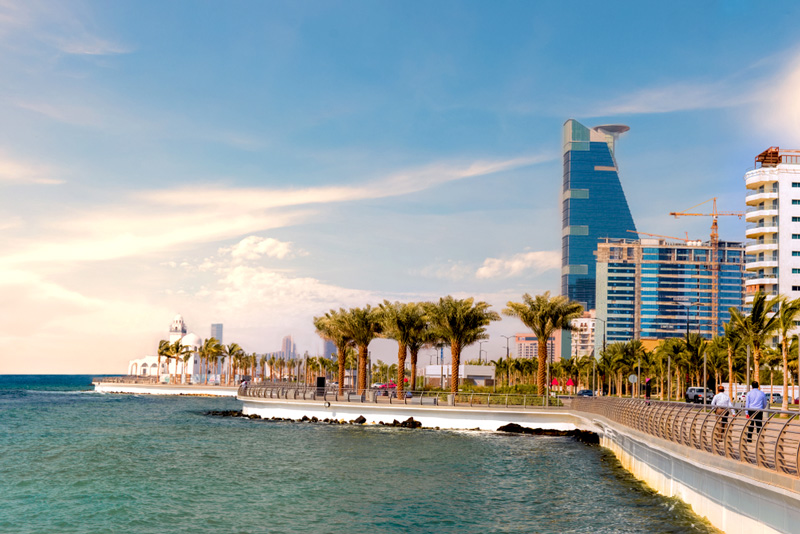Saudi Arabia: On the Road to Reform
Saudi Arabia is the largest economy in the Middle East, yet is one of the least understood in the world. Known for its abundant natural resources, the Kingdom’s economy has long been reliant on the oil sector. In 2017, it accounted for over 70% of Saudi Arabia’s export earnings and about 40% of its GDP. Triggered by the changing global energy market and demographic transition, the conservative and oil-rich monarchy is working to upgrade its image and embrace a new status as an open country and diversify its economy from oil.
The Need for Changes
During the decade of 2003 to 2013, the world market experienced an oil boom which saw the price of crude oil almost quadruple. As the world’s largest exporter of oil, a country which derived about 90% of its government revenue from oil, Saudi Arabia quickly felt the effect. Propelled by the oil boom, the Saudi economy has moved up from being the 27th largest in the world in 2003 to the 19th largest in 2014. Yet, the country was at its transition point when the sharp fall in oil prices in the second half of 2014 pushed the Kingdom’s budget from surplus into deficit, given its heavy reliance on oil revenue.
Fiscal pressures resulting from the decline in oil price have resulted in a political understanding from the Saudi government to introduce reforms. Soon after King Salman came to the throne in January 2015, the King moved quickly to streamline government policy formulation by restructuring government bodies as well as appointing trusted young leaders to pursue his agenda. In early 2016, Saudi Crowne Prince Mohammed bin Salman (widely known as MBS) unveiled an ambitious plan to bring economic and social change to the Kingdom – Vision 2030.
The Mega Plan: Vision 2030
Vision 2030 is primarily an economic blueprint that aims to mitigate the Kingdom’s dependence on oil and transform the nation’s economy into a more private sector-led self-sustaining economy. Under this plan, the Kingdom looks to build on its role as the heart of Arab and Islamic worlds, an investment powerhouse and the trading hub connecting Africa, Asia and Europe. Vision 2030 is built around three themes on social, economic and political aspects, each with its own specific goals. A full list of the Vision 2030 goals can be found here.
| Vision 2030 – Key goals | ||
| Theme 1: A Vibrant Society | Theme 2: A Thriving Economy | Theme 3: An Ambitious Nation |
|
|
|
Source: Vision 2030, Council of Economic and Development Affairs, Saudi Arabia
Along with the actions to be taken by the government and private sector, core priorities under Vision 2030 include diversifying the Kingdom’s economy, expanding the role of the private sector in the economy and developing alternative sources of government revenue. Understanding the broad national priorities and the expected delivery of economic targets allow investors and businesses to access their capabilities in contributing to the Kingdom’s development goals and capture uprising sector and market opportunities.
More about Saudi Arabia: Islam’s Heartland
Saudi Arabia is the birthplace of Islamic history and, with over 95% of Muslim population in the country, it plays a leading role in promoting the cause of global Islamic unity and solidarity. The country is rich in historical sites and hosts the two holiest sites in Islam - The Grand Mosque in Mecca and the Prophet’s Mosque in Medina. The country’s dedication to their national religion is demonstrated by its splendid maintenance and expansion of these holy sites with annual funds allocated exclusively for this purpose. Saudi Arabia also hosts the Muslim World League and the Organisation of the Islamic Cooperation, which aimed to preserve Islamic interests.
Islamic law (also known as Sharia law) is strictly enforced in the country and the government may issue regulations if those do not conflict with the established principles of Islamic law. Public practice of any form of religion other than Islam is still prohibited, yet small steps are being taken toward religious freedom after its new ruler promised to introduce a more moderate form of Islam to the country. Religious police are now off the streets and progress is being made towards allowing private worshiping and protecting the rights of minority religions.
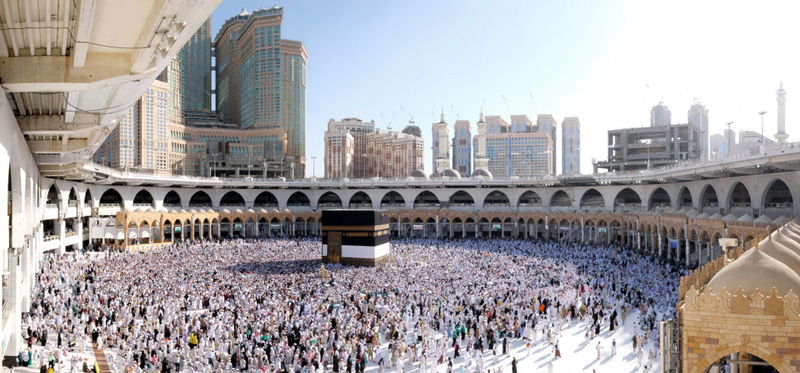
Launched as part of the Vision 2030, the “Destination for Muslims” initiative targets Umrah[1] and Hajj visitors, Muslim tourists and businessmen to visit the country for cultural heritage, tourism as well as exhibitions and conferences. In 2018, more than 2 million pilgrims from all over the world gathered in Mecca for Hajj, an annual religious pilgrimage held in the city according to the Islamic lunar calendar.
Foreign Policy: Shifting Focus to Asia
The Kingdom’s alliance with the US is built on decades of security cooperation and domination of US interests in the Saudi oil industry. Saudi Arabia is also the top destination for US defence sales, a position it has held since the late 1990s. Despite the close cooperation and business ties, US’ commitment to the Middle East and North Africa (MENA) region has seemed to be softening, as evidenced by the troop pull-out in Syria and an extensive reduction in the US military presence in Afghanistan.
With the ongoing structural shift in geopolitics, Saudi Arabia is strengthening its foreign relations with Asian economies. In late February this year, MBS has taken his first state-level visits to Pakistan, India and China, aiming to draw closer relationships and create economic cooperation opportunities. In fact, Saudi Arabia has expressed a keen interest in participating in China’s Belt and Road Initiative. During MBS’ visit to China, the two countries signed agreements in areas such as investment, energy, space and technology, including a plan for Saudi Arabia to participate in China’s Chang’e-4 moon mission and the manufacturing of drones.
Major Cities in Saudi Arabia
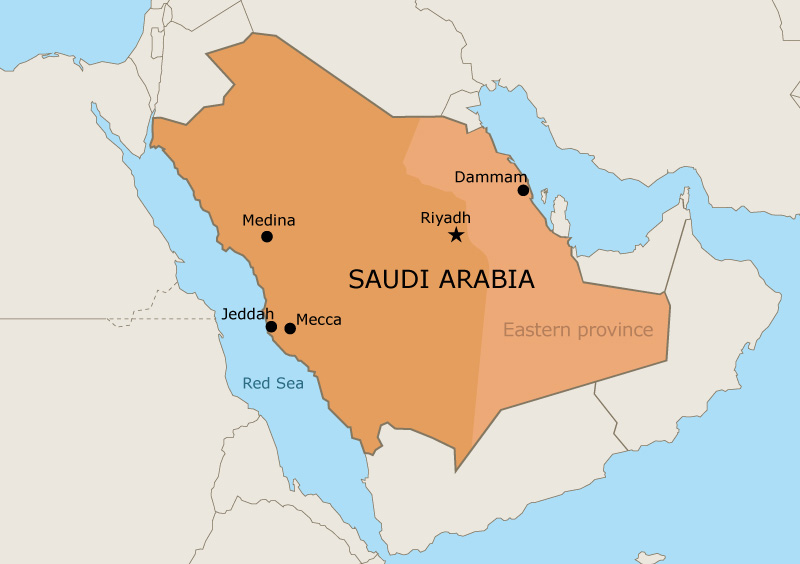
Riyadh
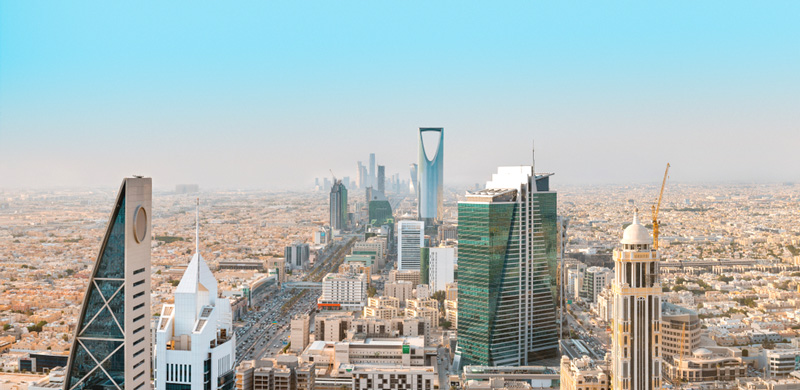
Located in the heart of Saudi Arabia, Riyadh is the capital of the country and has the largest population in the country. Being the capital, Riyadh hosts a number of government ministries and public services providers. It is also the country’s financial, diplomatic and commercial centre. The country’s central bank, national banks as well as foreign banks including HSBC SABB and State Bank of India are headquartered in the city. Riyadh is also home to some light manufacturing, such as chemicals, food and beverages and packaging materials.
Jeddah
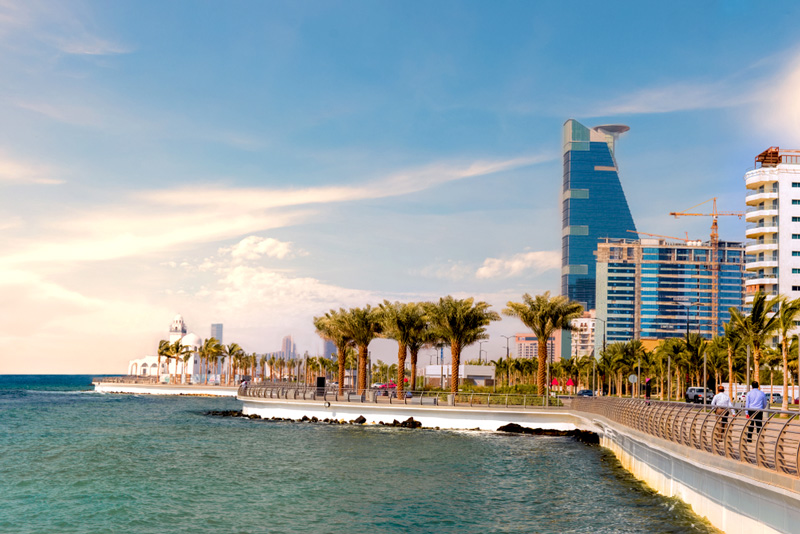
Situated in the west of Saudi Arabia, Jeddah acts as a major trading port for cargo ships traveling across the Red Sea and particularly an important trading hub across Africa. Jeddah Islamic Port is the second largest port in the country, handling over 3.9 million TEU in 2017. The port city is also a major centre for heavy industry manufacturing, producing goods such as tractors and machinery, building materials and mechanical products.
Since the country is consistently facing the problem of water scarcity, the country has invested heavily in seawater desalination, water distribution and sewage treatment. Conveniently located along the Red Sea coast, Jeddah is home to several major seawater desalination plants.
Being less the 80 km away from the holy city of Mecca, the city is also a vital gateway for Umrah and Hajj visitors.
Dammam
Dammam is the regional capital and administrative centre of the Eastern Province of Saudi Arabia. The Eastern Province enjoys enormous natural resources and is home to most of the oil production in the country. Saudi Arabia’s national petroleum and natural gas company ARAMCO and Saudi Basic Industries Corporation (SABIC), a world leader in petrochemical manufacturing, both have presence in the region. The region also hosts more than 85% of Saudi Arabia’s basic industries, with Dammam and Jubail having the most robust industrial development.
[1] Umrah, means “to visit a populated place”, is an Islamic pilgrimage to Mecca which Muslims can perform at any time of the year. In contrast, Hajj is performed over specific days during a designated Islamic month and considered as a once in a lifetime duty for Muslims.
